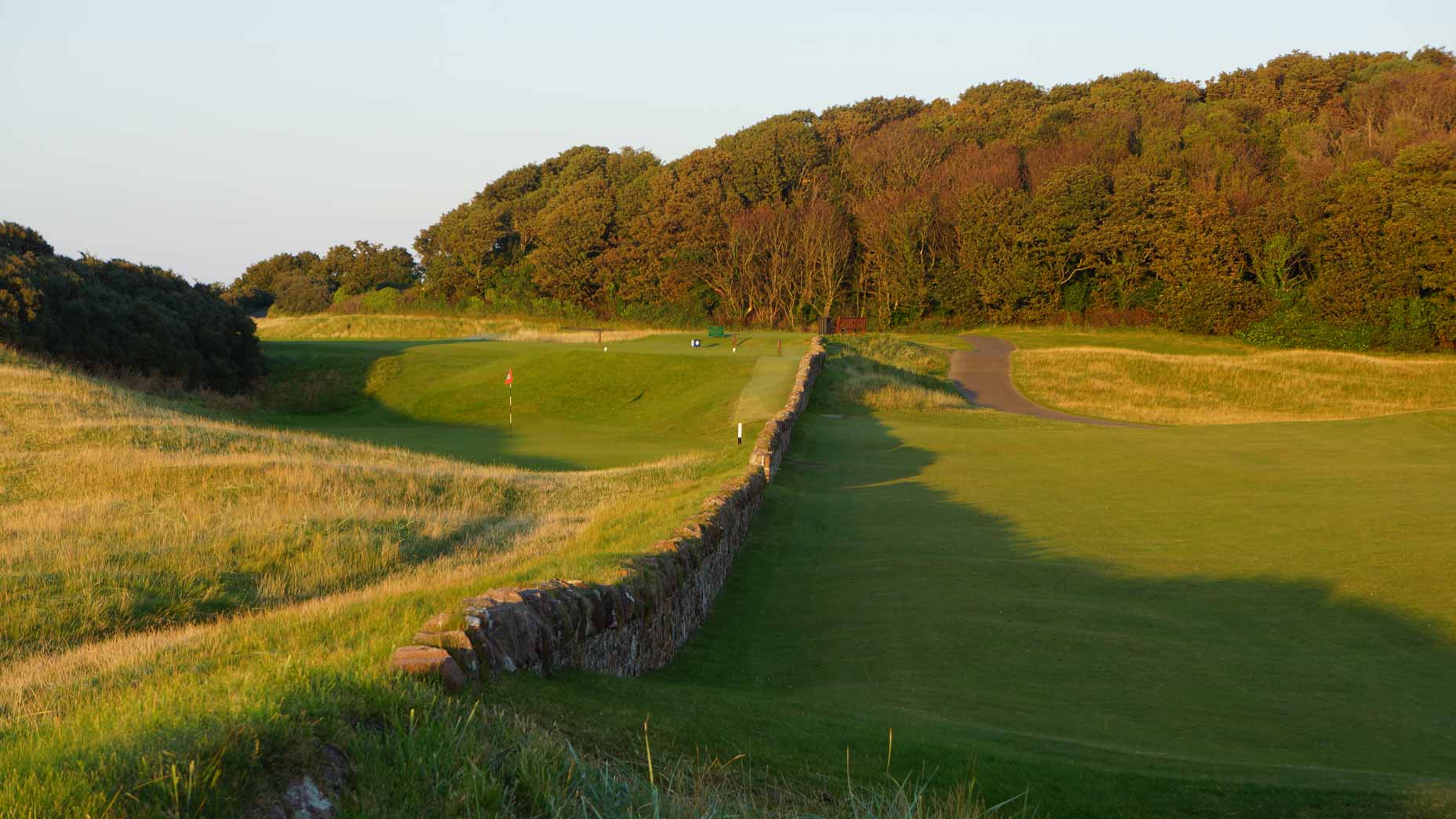
Josh Sens
March 1, 2025
In Brora, electric fences guard cows and sheep.
Gallisbon
Wrinkled ground and ruminants.
Ask the avid golfers in the Scottish Highlands about the Brola Golf Club fanaticism, and they must mention both.
Brora is home to the highly respected link, serving as grazing land for livestock. Its unique features include winding fairways and green knocked with electric fences to prevent sheep and cattle.
For many visitors, these animals are at the heart of Brora’s charm. But locals usually enjoy a romantic view.
Especially Brora members who attend courses throughout the year are not good for the ranch’s loopholes. In a recent vote, they came firmly: It was time to get rid of the beasts of cow’s hoof.
“We are very aware that some people see sheep and cows as integral to the Brora experience,” said former club president Andy Stewart. “But as locals, we may be more satisfied with the impact of these animals than those who only attend classes each year.”
Stewart noted that the livestock ban would require court approval before it was enforced, and it was not a steal. To better understand it, more than one context is required.
Founded in 1891, Brora was a 9-hole club until the early 1920s when renowned architect James Braid redesigned the course to the entire 18-hole. The land owned by the Duke of Sutherland belongs to the Highland law and requires sharing with the Crofters, which is shared with the Crofters, the Cottish of the Crofters, which is Rough Scottish, which equals tenant farmers. These crofters tend toward horses, and as decades passed, more and more cattle and sheep were used. Back in the 1910s, the club started the first of several events, offering the property only for golf. But these efforts are insufficient. In the 1960s, electric fences were installed around the greens, and life and golf continued, bringing other changes.
On the one hand, Brora’s livestock became bigger and richer, with about 25 reinforced cattle and a sheep expanding to about 250 times, more than ever, Stewart said. By 2017, when Stewart was the club’s chairman, the club’s relationship with Croft became tense. In the eyes of many members, Croft allowed more animals on the land than shared specially-made rules allowed, while also violating the prohibition on feeding livestock in the course. (Attempts to reach the Croft Commission in Scotland, which regulates and promotes the interests of Crost in the country, did not immediately succeed).
The resulting problems are not surprising. They range from trampling bunkers to hoof prints on fairways, as the winter rains get soft, and other unpleasant things. Cows are cool because of the extra features of the course. They are not too pleasant when your balls land in the feces.

East Lothian, Scotland, Golf Travel Planning Guide: Best Games, Accommodation, Places to Eat
go through:
GolfEdit
“Many times, members, myself, went out on the track and shoveled at five in the morning,” Stewart said.
In 2019, the club confirmed that it was enough. It dug into its stock and purchased the land. Not long after, Covid hit. But due to past lockdowns, membership revisited the livestock issue. The decision was not completed about eight weeks ago when the ballot was evaluated.
Recently, as the news of the vote has leaked into the ether currency, the reaction is mixed. On the golf club map at the online architecture forum, one commentator worried that the course would become less playable if the sheep were not trimmed roughly. Stewart said it was not a problem. The club has purchased new maintenance equipment that is increasingly capable of filling.
“These animals aren’t doing as good as some people think,” Stewart said. “There may be reasons why there is no club rushing to put sheep on their own courses.”
Furthermore, the livestock ban is not a completed transaction. The Crofts still have a say in the law and unless a settlement is reached, the matter will be decided in the Scottish Land Court, most likely six to nine months from now on.
If Brora goes away, Stewart understands that the club might hear some grip. But among the golfers who played the most classes, he was confident that those were the voices of the minority. There wasn’t much interest to get rid of livestock, including the potential to add fairway bunkers from Braid’s original designs, which were never built out of fear of being trampled on by ruminants in a place of destruction. The goal is to provide all the glory to members and visitors to express Brad’s work, Stewart said.
“It’s one of the great connections in the world, and it’s always been our desire to resume the course,” Stewart said. “We want to go to the green without electric fences, if there are no special rules, for example, what would you do if your ball ends in bull shit. They don’t do that in the Masters or Open Championship.”
“>

Josh Sens
Golf.comEdit
Josh Sens is a golf, food and travel writer who has been a golf magazine contributor since 2004 and now contributes to all the golf platforms. His work is concentrated in the best sports roles in the United States. He is also a co-author of Sammy Hagar, and we also had fun: Cooking and Party Manuals.
Source link



